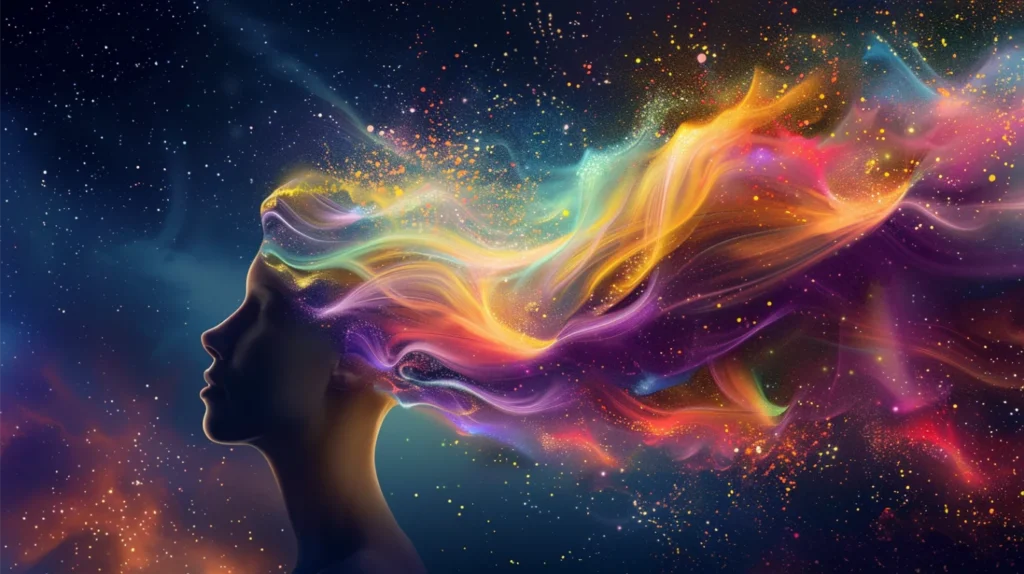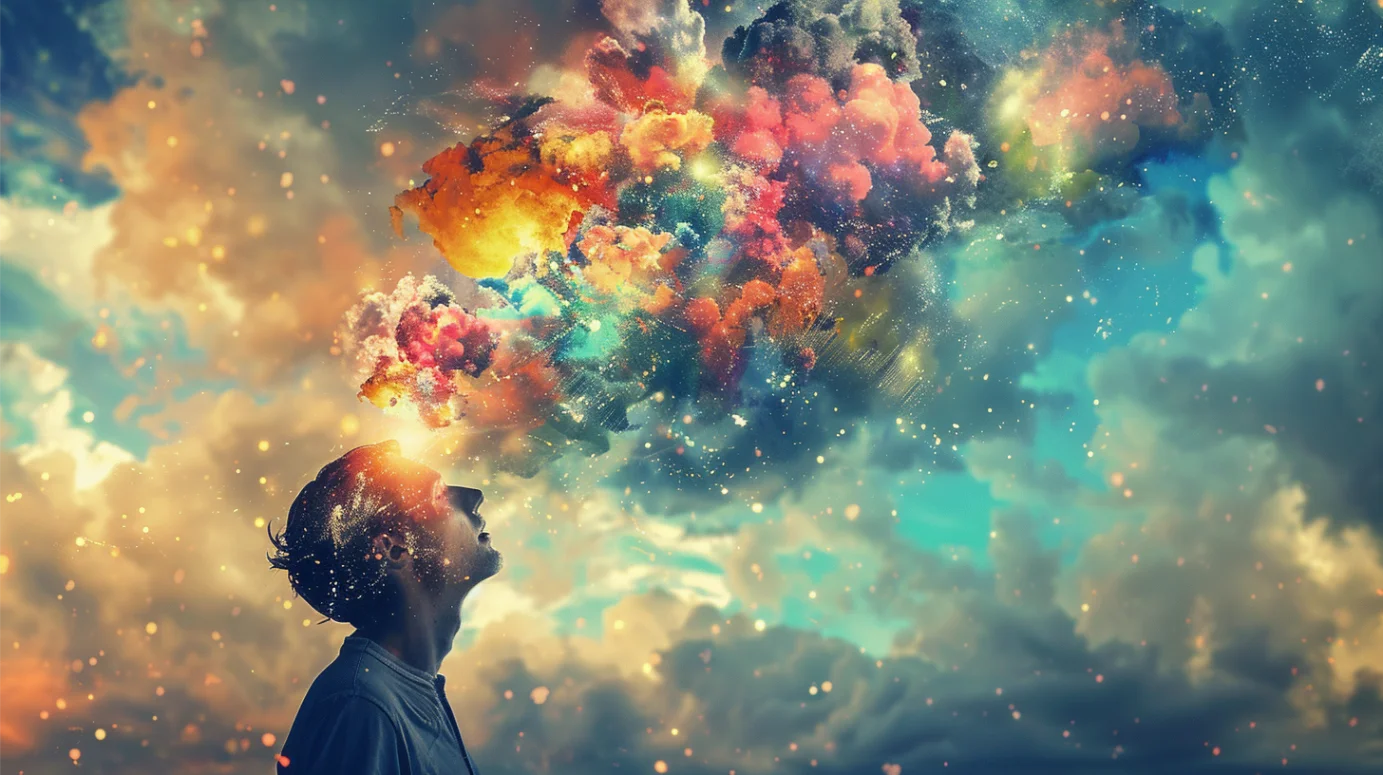Dreams have long been a source of fascination for people across cultures and throughout history. Beyond their mysterious and sometimes bizarre nature, dreams have also been recognized as a wellspring of creativity and inspiration. Many famous artists, writers, and inventors have credited their dreams with sparking groundbreaking ideas and fueling their creative pursuits. In this blog post, we’ll explore the profound connection between dreams and creativity, and how tapping into the power of your dreams can help you unlock your creative potential.
The Science of Dreams and Creativity
To understand how dreams can inspire creativity, it’s helpful to first delve into the science behind dreaming. During the Rapid Eye Movement (REM) stage of sleep, when most vivid dreams occur, the brain becomes highly active in regions associated with emotion, memory, and imagination. This unique neurological state allows for the formation of novel connections and associations that may not arise during waking consciousness.
Research has shown that REM sleep plays a crucial role in creative problem-solving and insight. In one study, participants were given a creativity task before and after sleeping. Those who had entered REM sleep showed significant improvement in their ability to find creative solutions compared to those who hadn’t reached that stage of sleep.
Furthermore, the content of dreams themselves can be a direct source of creative inspiration. The surreal and symbolic nature of dreams can provide artists and writers with rich material hiddensignificance.com to draw from in their work. The unbound creativity of the dreaming mind can generate ideas that might never emerge in the constraints of waking reality.
Famous Examples of Dream-Inspired Creations

Throughout history, there have been numerous instances of artists, writers, and inventors who have attributed their groundbreaking ideas to dreams:
- Mary Shelley’s Frankenstein: The iconic novel that gave birth to the science fiction genre was conceived in a dream. Shelley reported that the idea for the story came to her in a vivid nightmare during which she envisioned a scientist creating life from inanimate matter.
- Paul McCartney’s “Yesterday”: One of the most famous songs of all time was composed in a dream. McCartney has said that he woke up one morning with the melody fully formed in his head, and initially feared that he had unconsciously plagiarized it from another source.
- Salvador Dalí’s Surrealist Paintings: The renowned artist was known for his fascination with dreams and the unconscious mind. Many of his most famous works, such as “The Persistence of Memory,” were directly inspired by his own dream experiences and his interest in Freudian dream interpretation.
- Elias Howe’s Sewing Machine: The inventor struggled for years to create a functional sewing machine. The solution finally came to him in a dream, in which he envisioned a needle with a hole at the pointed end. This insight allowed him to develop the lockstitch technique that revolutionized the garment industry.
These examples demonstrate the incredible potential of dreams to generate novel ideas and solve complex problems. By paying attention to their dreams and mining them for inspiration, creative individuals can tap into a rich source of material for their work.
Techniques for Harnessing the Power of Dreams
If you want to use your dreams as a tool for enhancing your creativity, there are several techniques you can try:
- Keep a Dream Journal: Make a habit of writing down your dreams immediately upon waking. This practice will help you remember your dreams more vividly and potentially identify recurring themes or symbols that could inspire your creative work.
- Practice Lucid Dreaming: Lucid dreaming is the ability to become aware that you’re dreaming while you’re still in the dream state. With practice, you can learn to control your dreams and explore creative possibilities within them. Techniques like reality checks and mnemonic induction of lucid dreams (MILD) can help cultivate this skill.
- Engage in “Dreamwork”: Dreamwork involves exploring the emotional and symbolic content of your dreams through techniques like art, writing, or role-playing. By actively engaging with your dream material, you can deepen your understanding of your unconscious mind and generate new creative insights.
- Set Dream Incubations: Before going to sleep, set an intention to dream about a specific creative problem or theme. Write down your intention and place it near your bed. This practice can help prime your unconscious mind to generate dreams relevant to your creative pursuits.
- Create Dream-Inspired Art: Use the imagery, emotions, and narratives from your dreams as raw material for your creative work. Paint a scene from a particularly vivid dream, write a story that incorporates dream symbolism, or compose music that captures the atmosphere of a dream.
By incorporating these techniques into your creative practice, you can learn to harness the power of your dreams and tap into a rich source of inspiration and insight.
The Importance of Sleep for Creativity
Beyond the direct influence of dream content, the act of sleeping itself is crucial for maintaining and enhancing creativity. Adequate sleep has been shown to improve cognitive functions like attention, memory, and problem-solving, all of which are essential for creative work.
In contrast, sleep deprivation can have a detrimental effect on creativity. Studies have found that even mild sleep deprivation can impair divergent thinking, a key component of creativity that involves generating multiple solutions to open-ended problems.
To optimize your creative potential, it’s important to prioritize getting enough high-quality sleep on a regular basis. Aim for 7-9 hours of sleep per night, and create a sleep-friendly environment that is dark, quiet, and cool. Establishing a consistent sleep schedule and engaging in relaxing pre-bedtime routines can also help improve the quality of your sleep and dreams.
Conclusion
The connection between dreams and creativity is a powerful one that has inspired countless artists, writers, and inventors throughout history. By understanding the science behind dreaming and utilizing techniques to harness the creative potential of your dreams, you too can tap into this rich source of inspiration and insight.
Remember, the key to unlocking your creative dreams is to pay attention to them, engage with them actively, and allow them to infuse your waking life with new ideas and possibilities. So keep a dream journal by your bedside, experiment with lucid dreaming and dreamwork techniques, and most importantly, don’t underestimate the power of a good night’s sleep. Your most brilliant creations may be just a dream away.

